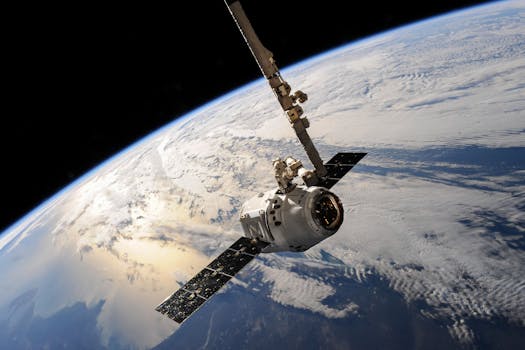The Future of Satellites: Revolutionizing Global Connectivity
The future of satellites is poised to revolutionize global connectivity, enabling faster and more reliable communication networks. With advancements in space technology, satellites are becoming increasingly important for a wide range of applications, from navigation and communication to weather forecasting and earth observation.

The Future of Satellites: Revolutionizing Global Connectivity
The future of satellites is poised to revolutionize global connectivity, enabling faster and more reliable communication networks. With advancements in space technology, satellites are becoming increasingly important for a wide range of applications, from navigation and communication to weather forecasting and earth observation. The focus keyword Future of satellites is an exciting topic that has been gaining attention in recent years, and it’s essential to explore the latest developments and trends in this field.
Satellites have been a crucial part of our daily lives for decades, providing us with essential services such as television broadcasting, mobile phone networks, and GPS navigation. However, the next generation of satellites is expected to be even more powerful and versatile, with the ability to provide high-speed internet access, support the Internet of Things (IoT), and enable advanced earth observation capabilities. The future of satellites is closely tied to the development of new technologies, such as 5G networks and quantum computing, which will rely heavily on satellite-based infrastructure.
Advancements in Space Technology
Recent advancements in space technology have made it possible to launch smaller, more efficient satellites into orbit, reducing the cost and increasing the accessibility of space-based services. This has led to a proliferation of satellite constellations, with companies such as SpaceX, OneWeb, and Amazon’s Kuiper Systems launching thousands of satellites into low Earth orbit. These constellations will provide global coverage, enabling people in remote and underserved areas to access high-speed internet and other essential services.
Another significant development in space technology is the use of reusable rockets, which has dramatically reduced the cost of launching satellites into space. This has made it possible for companies to launch multiple satellites at once, increasing the efficiency and reducing the cost of satellite deployments. The use of reusable rockets has also enabled the development of more complex and sophisticated satellites, with advanced propulsion systems and longer lifetimes.
Applications of Satellites
Satellites have a wide range of applications, from navigation and communication to weather forecasting and earth observation. The next generation of satellites will enable even more advanced applications, such as precision agriculture, environmental monitoring, and disaster response. Satellites will play a critical role in supporting the development of smart cities, enabling the creation of intelligent transportation systems, and providing real-time monitoring of environmental conditions.
The use of satellites in earth observation is another area that is expected to see significant growth in the coming years. Satellites will provide high-resolution images of the Earth’s surface, enabling the monitoring of deforestation, ocean health, and climate change. This will have significant implications for environmental policy and decision-making, enabling governments and organizations to make more informed decisions about resource management and conservation.
Challenges and Opportunities
While the future of satellites is exciting and full of opportunities, there are also significant challenges that need to be addressed. One of the main challenges is the issue of space debris, which poses a significant risk to the operation of satellites and other space-based assets. The proliferation of satellite constellations has increased the risk of collisions and other accidents, highlighting the need for more effective debris removal and mitigation strategies.
Another challenge is the issue of regulation and governance, which is critical to ensuring the safe and responsible use of space-based technologies. Governments and international organizations need to work together to develop clear and consistent regulations, enabling the development of a thriving and sustainable space industry. This will require significant investment in education and training, as well as the development of new technologies and infrastructure.
Conclusion
In conclusion, the future of satellites is poised to revolutionize global connectivity, enabling faster and more reliable communication networks. With advancements in space technology, satellites are becoming increasingly important for a wide range of applications, from navigation and communication to weather forecasting and earth observation. While there are significant challenges that need to be addressed, the opportunities presented by the next generation of satellites are vast and exciting, and will have a profound impact on our daily lives and the world around us.




